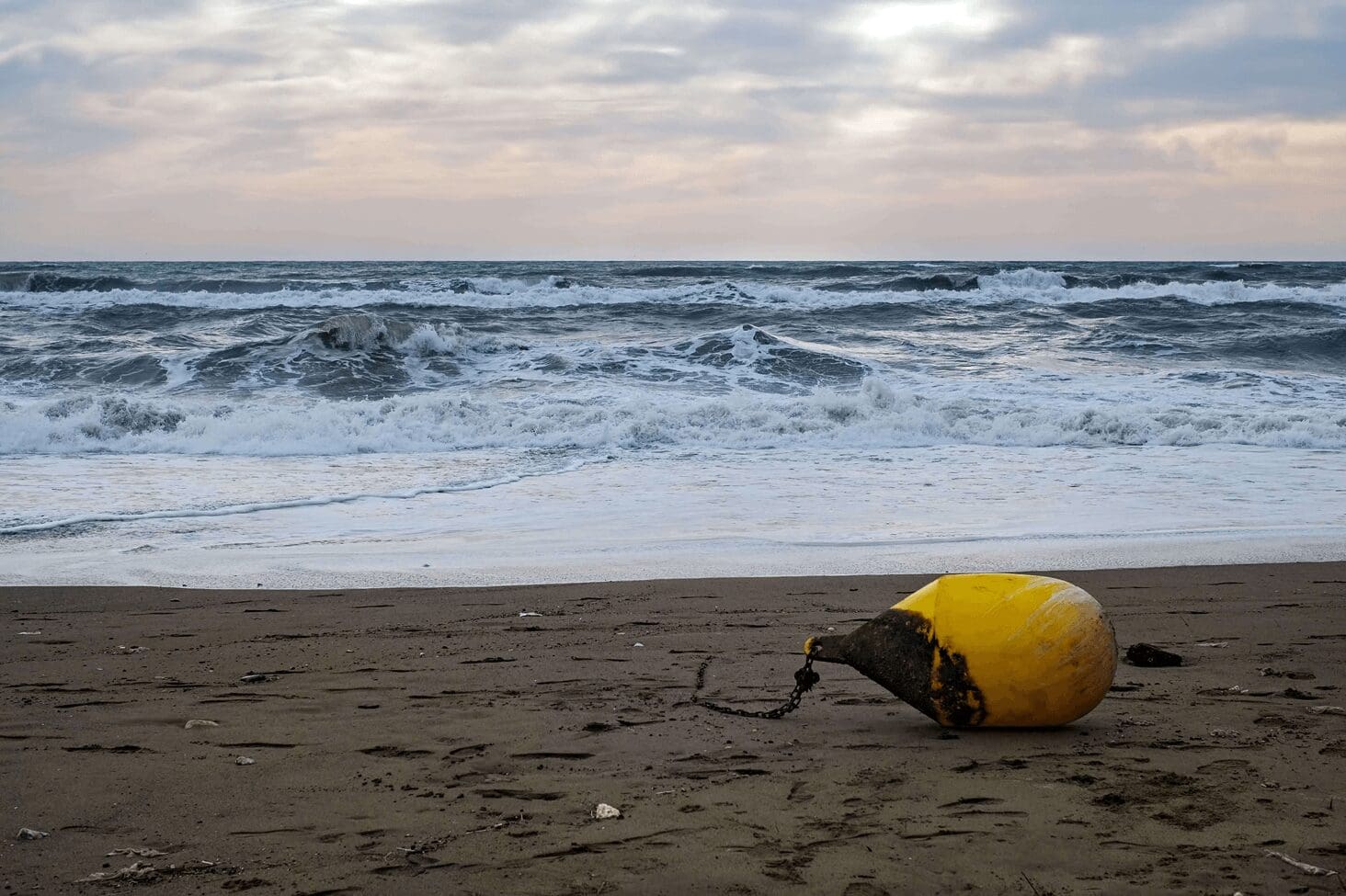There is always a compromise between cost and quality. Once you decide to buy a navigation buoy based on price, it tends to be the cheapest option that wins — but does this work out cheaper in the long run?
How are manufacturers cutting costs?
To reduce costs, hulls are normally single compartment, meaning they have to be foam filled. This comes at a price, which is why manufacturers will often make the skin as thin as possible, using the minimal amount of plastic.
Equally, UV stabilisation also comes at a cost. As such, manufacturers will add the minimum required to save money. However, this means we are left with a structurally weak buoy with a shorter lifespan, which is not fully recyclable and will potentially cost more to service as very little of it can be replaced.
These cost savings also extend to every other component of the buoy. Design is often driven towards a cheap mould, the ballast is often concrete and internal, and top marks tend to support only the minimum required for suitability on day one.
This is not necessarily the manufacturer’s fault as once you choose to buy on price, they have to reduce costs to remain competitive, which compromises the product they want to build.
Let’s not forget what we are looking to achieve here either — which is a clear navigational mark that is identifiable by colour and profile and has a stable platform for the light, so it is visible at night. Will a cheap plastic float perform as well as a purpose-designed buoy, where the stability has been properly calculated to support a light?
Buoys also tend to be specified based on hull diameter which, in turn, pushes manufacturers to make wide flat floats. However, these buoys will perform poorly in rough seas as it is not the diameter that is important but the buoyancy, as this is what dictates the sea conditions the buoy can cope with.
The daymark is also more important for visibility than the hull. Despite this, you will often see manufacturers place a tall skinny daymark on a wide hull to save on costs. However, although most people will be able to see this fine in calm conditions, once it is rough, it will get lost in the waves.
Advances in plastic technology
Traditionally, steel buoys have been seen as more durable, but that’s not to say you should replace them like-for-like if these legacy models have come to the end of their life.
Although there are plenty of cheap plastic buoys available on the market, advances in plastic technology mean there are also some excellent premium alternatives available these days. For example, premium plastic buoys such as the Mobilis JET 16000 are made from medium-density polyethylene (MDPE) using a modular system.
Unlike steel, polyethylene does not rust, helping to improve the life of the buoy when exposed to seawater. It is also UV stable, meaning it won’t require repainting. What’s more, polyethylene is incredibly light, which means the buoy is easier to transport and manoeuvre. A lighter buoy will also equate to less wear and tear on parts and chains.
Consider maintenance costs
Another factor to take into account before purchasing a buoy is maintenance. If you have ever had damage to a navigation aid for one reason or another, you will know how expensive an urgent repair can be. Parts, boat time and man-hours soon add up, often exceeding a yearly maintenance contract.
Cheaper buoys might have an attractive purchase price, but they are also much more susceptible to damage. In comparison, premium buoys are durable, have a higher ability to withstand impacts from boats and cope better with adverse conditions than cheaper options. Plus, even when damaged, premium modular systems allow individual components to be replaced at sea, rather than the entire buoy.
When properly maintained, premium buoys should not require replacing for at least 20 years — helping to reduce long-term costs.
Worth the investment
Ultimately, a cheap plastic buoy could be a good option if you only need it for a short period, even when taking into account the cost of disposal. But even here you will have a much better chance of selling it on (or getting a decent scrap value for it if you decide to recycle it) if you spend a bit more to purchase a premium buoy in the first place.
If you are looking for a longer-term requirement, then a more expensive — but much more durable — premium buoy will always be worth the investment.
Hydrosphere offers a diverse selection of navigation buoys to suit a range of applications and price points. To find out more, please get in touch today.








